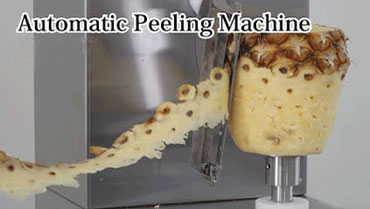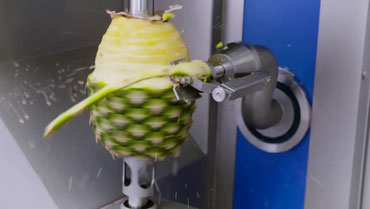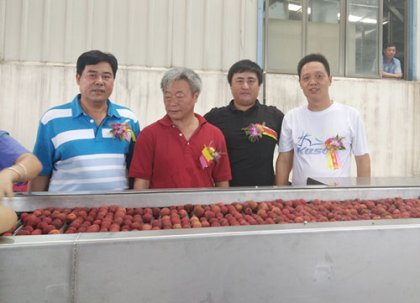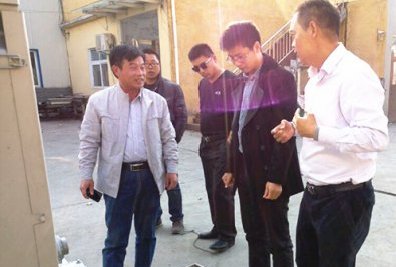Industrial Automatic Pineapple Peeling Machine
As the global pineapple processing industry expands, traditional manual peeling methods are revealing significant drawbacks—low efficiency, high labor costs, and increased safety risks. To meet the growing industrial demands,
AGICO proudly introduces the
Industrial Pineapple Peeling Machine and the
Automatic Pineapple Peeling Machine, bringing intelligent innovation to the pineapple processing workflow. Whether you're a small fruit factory or a large-scale juice or canning enterprise, our solutions help you lower costs, boost efficiency, and gain a competitive edge.
What Is a Pineapple Peeling Machine?
A pineapple peeling machine is specialized equipment designed to remove the tough outer skin of pineapples quickly and efficiently. Commonly used in the fruit processing industry, it saves labor, time, and ensures a more consistent quality of processed fruit. Some machines not only peel but also remove pineapple cores, preparing the fruit for further processing in juice, canning, or fresh-cut applications. In a complete pineapple juice production line, the pineapple peeling machine is an essential link.
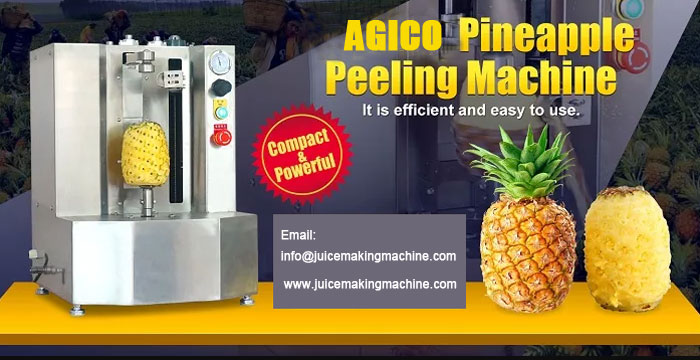
Technologies of AGICO’s Pineapple Peeling Machines
Pineapple Peeling Machine Classification
At AGICO, the pineapple peeling machine is the third key step in the pineapple production line, following sorting and washing. Our Industrial Pineapple Peeling Machine is built for high capacity and durability, designed for continuous operations in large production lines. Meanwhile, our Automatic Pineapple Peeling Machine integrates cutting-edge AI vision systems, automatic positioning, and IoT control, enabling fully unmanned operation.
How It Works
-
Automatic Feeding and Positioning:
Pineapples are conveyed into the machine where an AI vision system scans each fruit to identify its shape, size, and surface features, adjusting the peeling parameters accordingly.
-
Adaptive Cutting and Peeling:
Equipped with a 304 stainless steel rotating blade disk and pressure sensors, the machine adjusts cutting depth in real-time based on the fruit’s hardness. It follows the pineapple’s natural spiral, minimizing flesh loss to under 3%. Some models can simultaneously core the fruit, creating neat fruit cylinders.
-
Waste Recovery and Cleaning:
Skins are automatically transported to a waste bin, and some models offer integrated biomass recycling. The machines are equipped with CIP (Clean-in-Place) systems for automatic sanitation, eliminating cross-contamination risks.
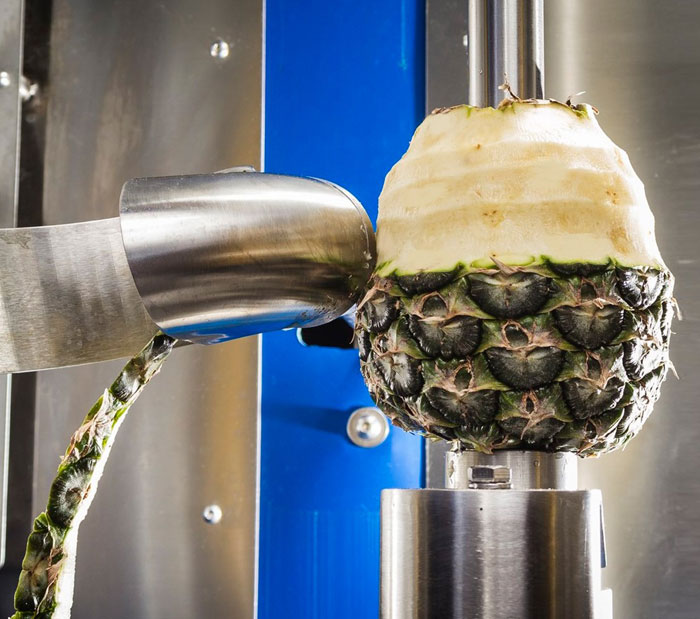
Technical Highlights
-
Processing speed: From 300 up to 2,000 pineapples per hour.
-
Fruit compatibility: 1.2–4 kg pineapples, suitable for any pineapples.
-
Energy efficiency: Power consumption ≤5kW/h, saving up to 40% compared to traditional models.
Integrating Pineapple Peeling Machine into Your Production Line
1. A Typical Pineapple Processing Line Includes:
The pineapple peeling machine directly influences the efficiency and quality of subsequent processes, making it critical to choose the right machine.
2. Other Related Equipment
-
Before Peeling:
-
After Peeling:
3. Value of AGICO’s Machines
-
Replace 20 skilled workers with one industrial peeling machine.
-
Cut overall processing costs by up to 60%.
-
Achieve 97% fruit utilization rate, significantly reducing raw material wastage.
Challenges of Manual Peeling
-
High labor costs (labor accounts for 45%+ of processing expenses).
-
Safety risks like knife injuries and skin irritation.
-
Quality inconsistency affecting the taste and appearance of final products.
AGICO's Innovative Solutions of Peeling Machine
-
AI defect detection to identify and remove rotten or immature fruits.
-
Modular designs combining peeling and coring.
-
IoT-enabled real-time monitoring and fault alerts (response time under 15 minutes).
How to Choose the Right Pineapple Peeling Machine
1. Usage Scenario
-
Home Use: Small quantities can be handled by manual or small electric peelers. Manual peelers are affordable and compact; electric models are more efficient and effortless.
-
Commercial Use: For fruit shops, restaurants, or food processing plants handling large volumes, commercial-grade machines like AGICO’s automatic pineapple peeling machines are recommended. These devices handle various fruits and vegetables and feature computer-controlled adaptive settings to boost productivity.
2. Blade Quality
-
Material: High-quality blades are usually made from stainless steel (e.g., 304 stainless steel) for sharpness, durability, and rust resistance.
-
Sharpness: Sharp blades easily remove pineapple skins while minimizing fruit damage and waste. Some blades feature special serrated designs to better handle uneven surfaces.
3. Safety
-
Design: Choose ergonomically designed peelers with comfortable grips and anti-slip features. Some models include protective gloves or slip-resistant handles.
-
Protective Devices: Larger electric machines should have safety doors and emergency stop buttons.
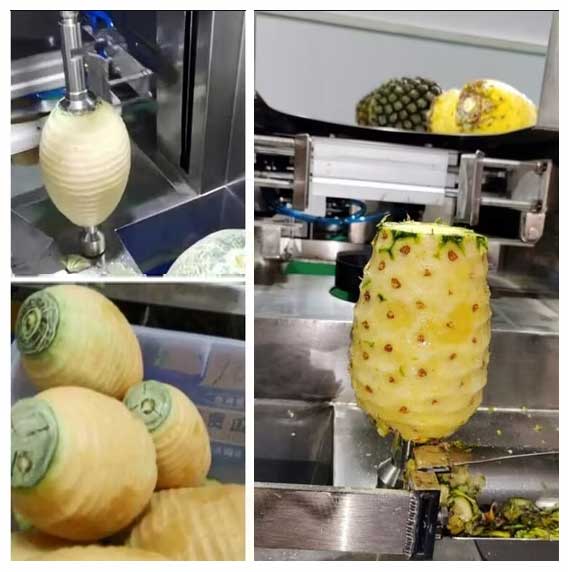
4. Functional Features
-
Peeling Effectiveness: A good peeler should remove skins cleanly while minimizing fruit loss. Some premium models can also remove the pineapple cores for a neater finish.
-
Adjustability: Machines with adjustable blade depth and position for different fruit sizes are more practical.
5. Price and Value for Money
-
Price Range: Manual peelers are inexpensive (a few dollars), while electric/commercial machines can range from hundreds to thousands of dollars.
-
Value: Choose a product with a good balance of performance, quality, and price based on your needs—don’t blindly chase high-end models or cut corners with low-quality ones.
6. Brand and After-sales Service
-
Brand: Choose reputable brands with proven quality and customer service. For example, AGICO’s pineapple peeling machines are well-rated in the market.
-
After-sales Support: Good after-sales service ensures timely assistance when issues arise. Check warranty periods and maintenance services beforehand.
Why Choose AGICO?
AGICO is committed to delivering high-performance, cost-effective pineapple processing solutions to global clients. Our equipment has passed CE, ISO 22000, and HACCP certifications and meets FDA standards for food contact materials. With 12 international patents, we are a technology leader in the field. For more information and quotations, please visit our website www.juicemakingmachine.com.
Whether you're running a small fruit processing plant or a large-scale canning or juice production facility, AGICO’s advanced equipment can help you lower costs, increase efficiency, and seize new market opportunities.
Get in Touch Now!



